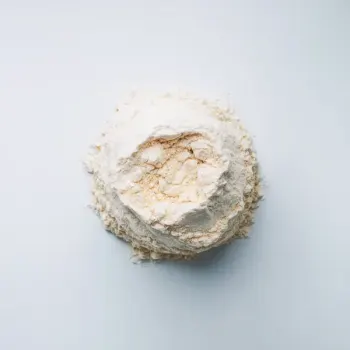Self-rising flour and all-purpose flour are two types of flour used in baking. Self-rising flour contains added baking powder and salt for a consistent rise, while all-purpose flour is plain and versatile, requiring additional leavening agents for recipes.

Self-rising flour is a combination of all-purpose flour, baking powder, and salt. It's a convenient option for recipes that require a consistent rise without the need for additional leavening agents.

All-purpose flour is a versatile, wheat-based flour that is milled to be suitable for a wide range of baking and cooking needs. It does not contain any added leavening agents or salt.
Self-rising flour is pre-mixed with baking powder and salt, offering a convenient shortcut for baked goods. All-purpose flour, however, is plainer and more adaptable, requiring bakers to add leavening agents as needed. The taste is neutral for both, but self-rising flour can impart a slightly saltier flavor due to its added ingredients.

Your ultimate Recipe Box, Meal Planner, and Cooking Class all in one
Ideal for banana bread and Irish soda bread, self-rising flour ensures a consistent and even rise. Expect a light, airy texture, and remember that additional leavening agents are not necessary. When using all-purpose flour for quick breads, you'll need to add a leavening agent like baking powder or baking soda. This allows for more control over the rise and flavor of the bread.
Use self-rising flour for simple sponge cakes or cupcakes to achieve a fluffy, well-risen texture with minimal effort. For more complex cake recipes that require precise leavening adjustments, all-purpose flour is the go-to choice. It's also ideal for denser cakes where a controlled rise is desired.
Self-rising flour is often preferred for classic Southern biscuits and scones for its ability to produce a light, tender crumb without the fuss of measuring out baking powder and salt. When precision is key, or when a recipe calls for a specific amount of leavening agent, all-purpose flour is used. It's also great for recipes that include acidic ingredients like buttermilk, which react with a separate added leavening agent.
Both Self-Rising Flour and All-Purpose Flour have similar nutritional profiles, but self-rising flour will have slightly higher sodium content due to the added salt.
| Nutrient | All-Purpose Flour ( per Cup ) | Self-Rising Flour ( per Cup ) |
|---|---|---|
| Fat | 1.2g | 1.2g |
| Sodium | 2mg | 1602mg |
| Protein | 12.9g | 12.9g |
| Calories | 455 | 455 |
| Carbohydrates | 95.4g | 95.4g |
Not all recipes can handle the substitution due to the added leavening agents and salt in self-rising flour. It's best to use it in recipes specifically calling for it unless you make the proper adjustments.
Combine 1 cup of all-purpose flour with 1 1/2 teaspoons of baking powder and 1/4 teaspoon of salt to make your own self-rising flour.
Yes, because it contains baking powder, self-rising flour has a shorter shelf life than all-purpose flour as the leavening power diminishes over time.
Recipes that require specific leavening control, like certain breads and pastries, may not fare well with self-rising flour substitutions.
Self-rising flour is not recommended for yeast breads as it already contains baking powder, which may interfere with the yeast's leavening action.